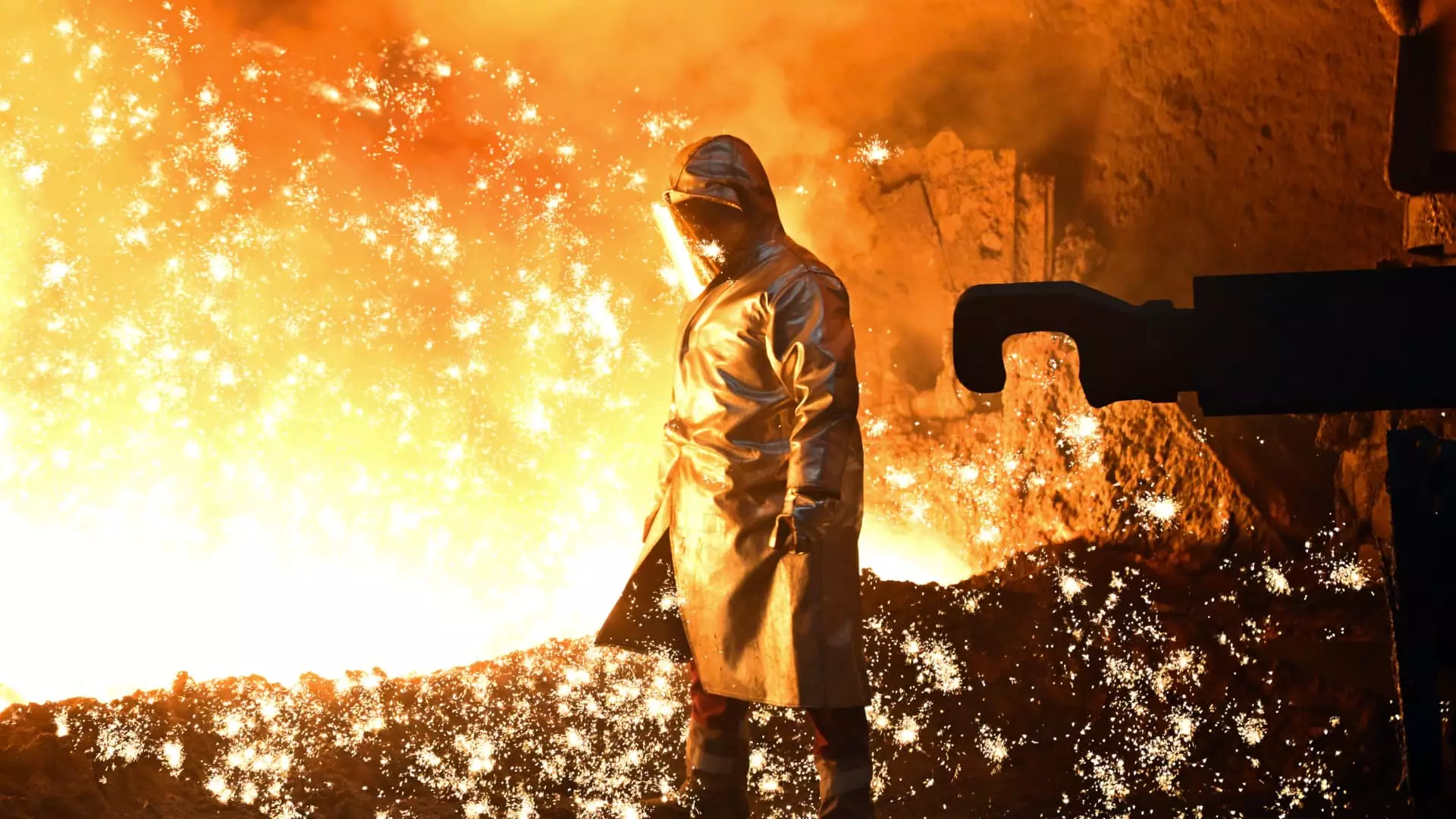In an evolving global economic landscape, the U.S. government’s trade policies have often sparked significant debate and controversy. Recently, President Donald Trump signaled his intent to impose new tariffs of 25% on steel and aluminum imports, a move reminiscent of his previously implemented tariffs during his first term in office. Setting the stage for another chapter of U.S. trade policy, this decision has implications that extend beyond simple revenue generation; it encompasses a spectrum of economic consequences that could reshape various industries and international relationships.
The proposal comes at a time when America’s steel imports have been on a downward trajectory, decreasing by approximately 35% over the past decade. While this trend has been attributed to previous tariffs, the aluminum sector tells a different story with imports rising by 14% during the same period. The disparities in these trends serve as a backdrop for evaluating how the new tariffs could uniquely impact various stakeholders across the economy.
The implementation of new tariffs presents both opportunities and challenges for the U.S. economy. On one hand, domestic steel producers are poised to be the most significant beneficiaries of these tariffs. With the expectation that tariffs would further decrease competition from foreign imports, U.S. steel companies could see an increase in domestic demand. Increased market share and greater pricing power may allow these producers to bolster profits. Historical data underscores this sentiment; following previous tariffs, investments in the U.S. steel industry surged, bolstering job creation and operational expansions within the sector.
Conversely, these tariffs can also have negative ramifications for other economic sectors. Industries that depend heavily on steel and aluminum, such as automotive manufacturing, construction, and packaging, face the risk of increased costs. As raw material prices rise due to the tariffs, these companies may experience squeezed profit margins and may need to either pass on costs to consumers or curtail production, which could ultimately harm job growth across various sectors.
The global landscape is far from immune to the effects of proposed tariffs, particularly for countries that heavily export steel and aluminum to the U.S. As one of the largest producers, both Canada and Mexico may bear the brunt of additional tariffs. The imposition of such tariffs could lead to a ripple effect across supply chains that span multiple countries, destabilizing trade relationships that have been established over decades.
Countries like South Korea, Japan, and Vietnam may face similar challenges, particularly in light of the surging steel exports from these nations to the U.S. Just last year, U.S. imports from Vietnam increased dramatically by more than 140%. Such a drastic rise raises questions about sustainability amid escalating trade tensions. Major exporters must reassess their strategies in light of changing U.S. fiscal policies and prepare for potential retaliatory measures.
While immediate responses to tariffs may predictably incite demand fluctuations, the long-term consequences remain inconclusive. James Campbell’s analysis highlights the dual nature of tariffs, as they may dampen demand in the short term yet also stimulate future investments. If new plants and facilities emerge in reaction to increasing domestic demand, the overarching balance of trade may ultimately align in favor of the U.S. economy.
Furthermore, the role of companies like Thyssenkrupp demonstrates how individual businesses can navigate such landscapes. With a strategic focus on high-quality products and a robust domestic presence, Thyssenkrupp underscores the adaptive potential of global firms facing the realities of U.S. trade policies. Their assertion that they might not face severe negative impacts from proposed tariffs reflects an understanding of the shifting market dynamics driven by governmental policies.
As President Trump prepares to potentially introduce sweeping tariffs on steel and aluminum imports, stakeholders within the U.S. and beyond must reckon with the multifaceted repercussions of such a move. While domestic steel producers may rejoice in the prospect of reduced competition, a clearer picture emerges when considering the broader implications for related industries and international trade relationships. In navigating this complex landscape, balancing immediate economic pressures with long-term growth prospects may prove essential for sustaining both U.S. manufacturing vitality and international cooperation in an interconnected global market.

Leave a Reply